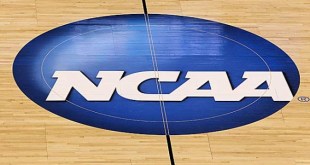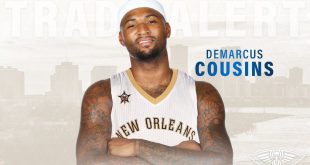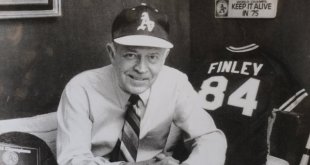Part II: Moving Forward Under the Qualifying Offer
As Spring Training approaches another high profile free agent – Kansas City Royals pitcher James Shields – finds himself without a contract. Whether Shields has fallen victim to his age (33) or failure to live up to his “Big Game” James moniker there is no doubt that the Qualifying Offer made by the Kansas City Royals has affected his status on the open market. During the offseason last year I profiled the impact the Qualifying Offer has on free agency. That impact became even more apparent when Stephen Drew and Kendrys Morales failed to sign contracts until well into the 2014 season. It’s certainly arguable that both hitters’ subpar statistics were partially attributable, if not completely, to missing Spring Training and not playing until a third of the way through the season. The impact of the Qualifying Offer has spilled over into this offseason for Morales and Drew as their poor performance last season afforded them only short-term contract offers.[1] In navigating the waters surrounding free agents tied to Qualifying Offers, Major League clubs and agents need to creatively negotiate contractual terms to mitigate the risks involved for both parties.
The evolution of free agency in Major League Baseball has started to mirror that of the National Football League in that the leagues are now using similar tools so teams can protect their investments in developing on-field talent. For years the franchise tag has allowed football teams to better insulate themselves from losing foundational players. Under the most recent NFL CBA, the non-exclusive franchise tag enables teams to select one impending free agent and give him a one-year contract valued at the average of the salaries of the 5 highest paid players at his position over the past 5 years. When an NFL team uses the Franchise Tag on an impending free agent it receives two first round draft choices from the team signing that player. Unique to football, the Exclusive Franchise Tag prevents other teams from signing a player receiving such a designation. The functional differences between the non-exclusive franchise tag in football and a Qualifying Offer in baseball are timing and leverage.
Essentially, MLB free agents receiving Qualifying Offers are ‘tagged’ and their leverage in free agency becomes limited. In football once the franchise tag is applied the affected player has the security of the one-year guaranteed contract while still being able to explore what ultimately is a depressed market for his services. While in baseball a Qualifying Offer is just that - an offer. A player receiving a Qualifying Offer has to decide whether to accept the 1-year contract or test the free agent market. In effect, however, both designations limit a player’s access to the free agent market. Football players who receive the Franchise Tag rarely sign with another club because of the punitive free agent compensation. Similarly, the Qualifying Offer – as documented in Part I – has negatively impacted the ability of designated players to obtain a fair market value contract and has also increased demand for players not tied to free agent compensation.
The relative longevity of the Franchise Tag and the way in which NFL teams employ it serves as a model for MLB clubs in their use of the Qualifying Offer. Considering the high monetary value of the Franchise Tag and the ever-present impact of the salary cap, NFL teams do not use the Franchise Tag each offseason. Instead they reserve it for players with a certain level of talent or particular importance to their club. During the 2012 off-season 21 NFL teams used the Franchise Tag, 8 teams used it in 2013, and only 4 in 2014. Not one of the 33 players affected by the Franchise Tag the last 3 seasons signed a free agent contract with another club.
It is important to note that the Franchise Tag can only be used on one player per year, while there is no limit on the number of Qualifying Offers an MLB team can extend. In 2013 MLB front offices were determining the impact and effect of the new CBA and as a result seemed hesitant to use the Qualifying Offer. Frequent yet judicious uses of the Qualifying Offer will allow clubs to not only protect their investment in developing on-field talent but help control the ever increasing cost of free agent acquisitions. If their clubs had extended Qualifying Offers to Edwin Jackson, Torii Hunter, and Angel Pagan after the 2012 season they likely would not have accepted. The effect of such an offer would have been draft pick compensation and a depressed free agent market due to less demand. This decreased market would have likely reduced the value of contract offers they received which, at best, may have allowed their original team to retain the player or, at worst, stunted the increase of player salaries. If these players had accepted a Qualifying Offer they would have received a one-year contract at or near the average annual value of the long-term deals they actually signed. Although salaries under the Qualifying Offer fairly compensate players, this benefits the Clubs as they could have retained these players at fair market value without any long-term risk.
Baseball’s experience with the Qualifying Offer has not seen the free agent market for tendered players dissolve in quite the same manner as the market for players receiving the Franchise Tag in football. This is partly because MLB’s Collective Bargaining Agreement – often referred to in industry circles as The Basic Agreement – protects the use of the Qualifying Offer. The CBA contains several provisions aimed at preventing players and teams from circumventing the purpose behind the Qualifying Offer – to retain or offset the loss of a significant player. First, players cannot sign contracts prohibiting the club from exercising their right to extend the player a Qualifying Offer or accept a Qualifying Offer on the condition that they will not receive such an offer the subsequent offseason.
Second, if a player accepts the Qualifying Offer the Basic Agreement states that “…he shall be a signed player for the next season on a one-year contract.” Meaning, that unlike NFL Players who are designated with the Franchise Tag, an impending MLB free agent who accepts a Qualifying Offer cannot hold out. NFL players are hindered in their free market movement, but they are not obligated to report or play for their team until they sign their contract. In other words, they face no financial penalty for holding out. On the other hand, Major League free agents have 7-12 days to accept their Qualifying Offer or otherwise test what is sure to be a depleted market for their services. By establishing a binding contract the CBA prevents players who have accepted a Qualifying Offer from leveraging a holdout to demand a long-term contract or trade.
Despite having not signed a Uniform Player Contract, the purpose of the language in the Basic Agreement is to bind a player accepting a Qualifying Offer to the Uniform Player Contract for a one-year deal. The Uniform Player Contract (UPC) is the standard contract negotiated by Major League Baseball and the Players Union under the Basic Agreement that all players sign. The only difference between individual player contracts are the amendments notable players negotiate outside the standard terms of the contract. No trade clauses are the most well-known of these amendments but they can also cover such things – as reported in Jon Lester’s new contract with the Cubs – as a hotel suite on the road and the right to 25 hours annually of private-plane use for him and his family.
The Basic Agreement contains two provisions that protect a club from a player holding out. First, Section 6D of the UPC permits clubs to withhold a player’s salary during a hold out. Additionally, the regulations contained in the Uniform Player Contract allow a Club to impose a reasonable fine and/or suspend a player once his hold out ends.[2] Second, the Commissioner could use his powers under the best interests of baseball clause to suspend or otherwise penalize a player who violates the terms of his contract by refusing to play under the terms of the Qualifying Offer.
However, players and teams are not left without recourse or the ability to be creative. A Qualifying Offer cannot be offered to players who were on more than one roster during the season preceding their free agency. Using an amendment to the Uniform Player Contract discussed above, a player signing a free agent contract or an extension with his current club could negotiate a clause granting an option to opt out at a certain point prior to the September 1st postseason roster deadline if his club is out of contention. Such a clause would only apply in the absolute last year of a contract, including any future club options. This would enable a player to sign on with another club, compete for a pennant, and avoid the possibility of a Qualifying Offer from hurting his potential earnings in free agency. This concept is similar to the provision in the CBA that allows players signing minor league free agent contracts to opt-out if they are not on a MLB roster by a certain date. Another alternative is a clause requiring the club to place the player on Release Waivers which gives the player the opportunity after five days to be claimed by another club or become a free agent.
The Basic Agreement allows players who have rejected a Qualifying Offer to sign several different minor league contracts without the signing club having to surrender a high draft choice. The player’s contract can then be assigned to the Major League club. However, such a contract cannot be designed to circumvent the CBA by avoiding the compensation owed under the Qualifying Offer. For instance, a club could sign such a player to a contract modeled off of the deal that Francisco Rodriguez signed with the Brewers for the 2013 season. Under that contract, the Brewers had 30 days to assign Rodriguez to their Major League roster and pay him two million dollars. A player receiving a Qualifying Offer would likely require significantly more money for his call-up to the Major League club, but the contract could also contain additional dollars and/or years that vest once the player reaches certain statistical benchmarks, i.e. 250 plate appearances for a hitter or 15 games started for a starting pitcher.
The alternative Minor League contract a club could offer a player who rejected a Qualifying Offer is one with an excessive Minor League retention bonus. The CBA mandates that players having signed a minor league free agent contract who do make the Major League roster out of Spring Training or are not released prior to the start of the season receive a $100,000 retention bonus. The CBA does allow for clubs and players to negotiate a higher retention bonus. This would enable a player, similar to Stephen Drew or Kendrys Morales, who remained unsigned well into Spring Training but not having a multi-year offer, to sign with a club at market value comparable to other players who were not inhibited by a Qualifying Offer.
Lastly, clubs have the flexibility to sign players inhibited by Qualifying Offers to Major League contracts. The Basic Agreement is silent as to sign-and-trade agreements between a player, his old club, and a club looking to sign that player in free agency. If a club covets a free agent but does not want to lose its first round selection in the amateur draft, it can use other assets from minor league prospects to players on its Major League roster to acquire that free agent through a sign-and-trade deal that prevents the loss of a draft pick. Fifteen teams designated by the Basic Agreement as small-market clubs receive extra draft selections distributed through the competitive balance lottery. These selections occur after the first and second rounds. Unlike regular draft picks, the selections awarded through the competitive balance lottery are tradable. As a result small market clubs that place a premium on first round draft choices can combine these competitive balance picks with other assets to sign free agents through a sign-and-trade agreement without giving up a first round pick.
Conclusion:
If the Qualifying Offer survives the negotiation of the new Basic Agreement following the 2016 season it will prove to be an effective roster management tool. Aside from compensating a club that lost a free agent with an additional selection in the Amateur Draft, the Qualifying Offer may actually enable that club to retain the player. With the understanding that players tied to a Qualifying Offer may have limited demand on the free agent market, clubs may be able to retain a key player for a risk averse one-year contract or what might previously have been a below market multi-year contract. If a club extends a Qualifying Offer merely to gain an additional draft pick but wants to avoid the financial obligations that come with a Qualifying Offer, the club can always trade the player for prospects or extra allowance in the international signing bonus pool if the player accepts the Qualifying Offer.
However, by limiting demand for players tied to compensation on the free agent market the Qualifying Offer also helps to limit salary growth. Salaries are usually based on the precedent of previous salaries of comparable players, so using the Qualifying Offer to reduce salaries in the current free agent market will help slow the growth of free agent contracts in the future. For the overall benefit of the league, teams wavering on whether or not to extend a player a Qualifying Offer should err on the side of extending an Offer as players generally seek the protection of guaranteed money that accompanies multi-year deals. As a result, players are likely to decline Qualifying Offers in order to seek the financial security of a long-term contract. The effect of the Qualifying Offer in deflating free agent salaries should help curtail the growth of player salaries moving forward. Since the Qualifying Offer is tied to the average of the top 125 salaries across baseball, minimizing the growth of player salaries will also slow the year-to-year increase in the value of the Qualifying Offer. Therefore, the Qualifying Offer not only affords teams the ability to retain their own free agents or receive compensation if they sign elsewhere, but also stems the tide of the increasing cost of player salaries.
[1] Kendry Morales signed with the Kansas City Royals for 2 year $15.5 MM, with a 3rd year option valued at $11 MM or $1.5MM buyout – guaranteeing him $17 MM over two years. Stephen Drew signed a 1 year $5 MM contract with the New York Yankees.
[2] Uniform Player Contract, Section 6(D) and Regulation 5 - The Basic Agreement, Pages 282 & 291.
 The Sports Esquires Putting Sports on Trial
The Sports Esquires Putting Sports on Trial





I correct me if i’m wrong but i believe Cespedes contract prohibits his team from offering him a qualifying offer when he becomes a free agent after 2015 which was part of the reason why both the A’s and Red Sox traded him away.
He does, but 1) that contract was signed prior to the new CBA and, 2) the contractual language requires that his team (now the Tigers) non-tender him a contract after this season - which in effect prevents them from making Cespedes a Qualifying Offer
Cespedes contract was negotiated before the new CBA but signed a month or two after. “Shortly before Cespedes signed his contract with A’s, the Players Association and MLB agreed to the current CBA.” per your own story. This would seem to be a loophole in the system that sports agents would be wise to exploit for their clients who sign their first contracts after being drafted or signed from Cuba, Japan, DR, Venezuela etc. to help prevent situations like we have seen with Drew, Morales, and to a lesser extent James Shields. Granted the players would have to give something up in return for teams to allow this language to be put in their contract but in the case of a draftee, their contracts are not all that spectacular to begin with (unless you are Bryce Harper) and in the case of an international signee, they are coveted to such a high extent by teams that they are in a position of strength in negotiations to demand it. Puig, Abreu, Tanaka, Darvish, and now Moncada were or are coveted to such an extreme that teams would be highly unlikely to object to this request.